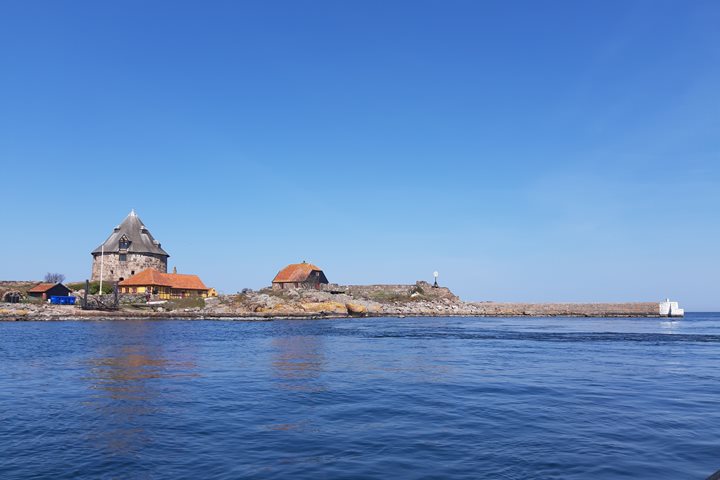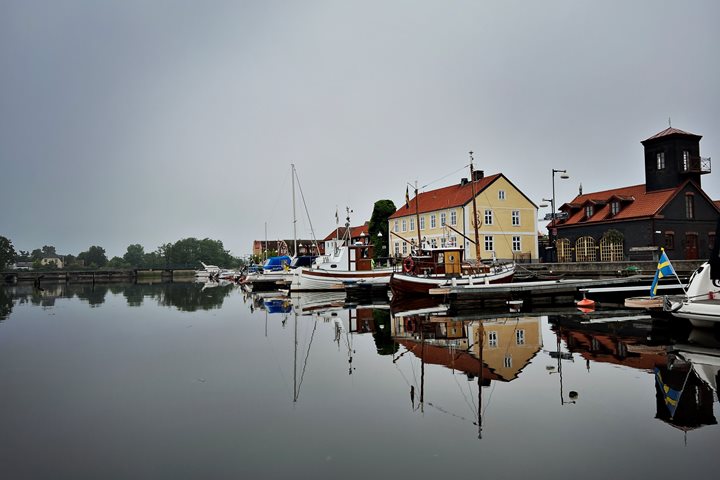Our sixth day in Sweden was spent exploring the country’s largest island, Gotland, “The Pearl of the Baltic.” An unspoiled island with pine and spruce forests, hay meadows full of wildflowers, wide deserted beaches, old farmsteads, a profusion of country churches, and a capital city, Visby, with charming medieval houses and one of the best-preserved ring walls in Europe.
Finding a berth after traveling 150 nautical miles from Stockholm, we immediately set off– cycling around the ramparts, visiting a sheep farm (with a few bronze age monuments thrown in), or taking a long stroll through the old town, which is what I did.
Kathy, an English archaeologist who has been working on the island for the last 25 years, was our guide. Her first stop was the Gotland Historical Fornsal Museum. There are many treasures here–huge silver hoards, to begin with–but the greatest treasure is the array of decorated standing stones.
For well over a millennium and a half, the Gotlanders erected skillfully carved stones decorated with symbols of renown, death, and resurrection, including dramatic scenes from the sagas of gods and monsters and entwined dragons filled with runes. A woman with a serpent-like object in her hand also seems to be involved in the event–can she be a witch? Might it be a valkyrie on the scene of the battle?
The stones were probably erected both in memory and in honour of the deceased, and to foster the contemporary cults. They were not tombstones; they stood at road crossings and bridges to impress passersby.
Kathy has personally been involved in the excavation of a number of skeletons, dating back to 2500 BC. This is not just a professional interest: she remembered how touched she was, removing a jar of food from the remains of a 19-year-old girl, given to her for her last journey into the underworld. The bones came alive, so to speak.
The museum focuses on the heyday of Visby, when it was part of the Hanseatic League, that great medieval alliance of trading cities. It later declined due to power struggles and was eventually plundered in 1525 by its rival Hanseatic town, Lübeck.
We then strolled through the utterly picturesque cobbled streets of Visby with Kathy. We passed sturdy warehouses from the 14th century, a number of ruined churches, the great German cathedral, and wooden houses covered under a freckled skin of tar.
After lunch, we took another stroll to the ruins of St. Clemens Church, where the Visby Vokalensemble gave us a taste of their Försommarskonsert. About twenty singers sang a bit of Händel in perfect acapella harmony, followed by delightful Swedish and Gotland traditionals, while a bunch of upstart crows screeched along with them; it was an open air concert, after all.







